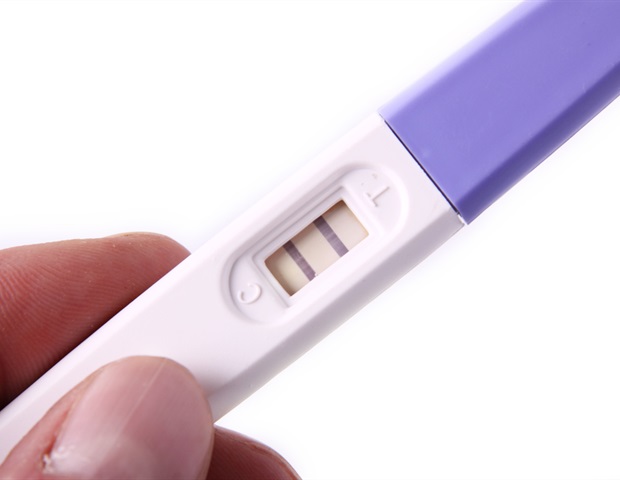
When you’re pregnant, you’re pregnant for *almost* a full year—a whole 10 months, give or take. Which, yes, is wonderful and amazing, but it’s also a looooong time. If you’ve reached full-term in your pregnancy and are ready to try to speed things along by trying to naturally
induce your labor at home, we feel you.
The good news is that there are several techniques you can try to get labor going. But first, there are some important things you need to know.
If labor hasn’t started yet, there’s probably a good reason for it. As we share in
The Motherly Guide to Becoming Mama, we believe that babies send a signal of sorts when they are ready to be born, so it’s possible that your baby just wants to bake a bit longer. Or maybe your body isn’t quite ready yet. It can feel so discouraging toward the end, especially if you’re watching your due date sail by, but be confident that your body knows what it’s doing.
Dr. Shannon M. Clark, a double board-certified OB-GYN and maternal-fetal medicine specialist, advises that pregnant people wait until week 39 before starting any at-home induction techniques. Induction before 39 weeks of gestation—unless medically indicated—is not recommended, whether via induction in the hospital or via natural methods.
Also, remember:
- Before trying any natural ways of inducing labor at home, let your obstetric care provider know. They may have important suggestions or precautions based on your personal medical history.
- If you’re high risk or have any pregnancy complications, it’s not safe to try any labor induction at home.
- Inducing labor can take days, especially if this is your first time laboring. You should not expect immediate results, nor should you get discouraged if things don’t happen as expected.
OK, so you’ve checked in with your provider and gotten the green light. Now, it’s time to start.
Here are nine ways to naturally induce labor:
1. Exercise
Taking long walks to induce labor is pretty safe (unless you have a medical reason not to, of course). The theory is that the weight of the baby’s head pressing down on the cervix can stimulate the release of oxytocin and induce uterine cramping or contractions. Moving can also help the baby get into a better position for birth.
It’s important not to exhaust yourself walking in order to induce labor. Labor is exhausting enough once it starts! Make sure you stay hydrated, rest when you get tired and bring your phone; you don’t want to be far from home, alone and suddenly in labor. Sometimes if the cervix has dilated some but you are not yet in active labor, going for a walk may tip the scales and cause cervical change or kickstart labor.
2. Sexual intercourse
Sexual intercourse is often recommended by providers to start labor naturally.
If your partner produces semen, it could help get labor started since semen contains prostaglandins, which can cause uterine cramping and contractions. Different forms of prostaglandins are used in the hospital setting to induce labor.
In addition, a woman’s orgasm during intercourse may lead to uterine cramping or the onset of uterine contractions.
One important caveat: Sex is not recommended if there’s any chance your water might have already broken. In addition, if there has been any bleeding, or if your doctor has instructed you to abstain from intercourse for any other reason, sexual intercourse is not recommended.
3. Herbs
A variety of herbs and teas are thought to potentially stimulate labor. These include:
- Clary sage oil: While it should not be used earlier in pregnancy, once you’re at full term, clary sage can work its uterine magic. Herbal practitioners have used it for ages to induce contractions and improve the effectiveness of contractions in labor. However, it has never been clinically evaluated for this use, so you should always consult your practitioner before trying a new remedy.
- Evening primrose oil: There’s no evidence to support that it works, but it also has not been found to be harmful.
- Red raspberry leaf tea: There’s no evidence to support that it works, but it also has not been found to be harmful.
- Be aware that a couple of commonly recommended herbs for stimulating labor are not proven safe: Blue and black cohosh and comfrey root have no evidence to support that they work, and they may be dangerous for the baby.
4. Acupuncture
There is some data to show that acupuncture can help induce labor at term. If you opt to try acupuncture, find a licensed professional who specializes in acupuncture during pregnancy.
5. Acupressure
Acupressure, the practice of applying light, consistent pressure to specified points on the body, may also be used to trigger the labor cascade when used effectively by a trained practitioner. In some cases, acupuncture professionals are also familiar with acupressure techniques and can offer guidance in this area.
6. Chiropractic care
Some chiropractors use a labor induction technique late in pregnancy that combines chiropractic adjustments that stimulate the parasympathetic nervous system (your relaxation response) and release the ligaments around the uterus and pelvis. It’s important to find a licensed provider who specializes in caring for pregnant people.
7. Nipple stimulation
Nipple stimulation prompts the pituitary gland to release oxytocin, the same hormone that initiates the milk let-down response with breastfeeding and can cause uterine cramping during breastfeeding. The synthetic form of oxytocin is
Pitocin. This drug is used in hospitals to induce or augment labor.
Gently massaging or rolling your nipples with your fingers may effectively start labor—and make it happen faster. Research on this method is limited, but one small study found that it actually increased the odds of having a vaginal birth. It’s important to note that some providers have concerns over whether nipple stimulation is safe—the concern is that it could generate too many contractions, which could cause fetal stress.
Before attempting nipple stimulation, be sure to consult with your provider to determine if this is an appropriate at-home labor induction method for you.
8. Dates
Dates have long been used in Middle Eastern cultures to stimulate labor, and some research seems to back this up. One meta-analysis in 2020 found that women who consumed dates in late-term pregnancy had greater cervical dilation and a reduced need for labor induction methods when they arrived at the hospital.
9. Castor oil
The theory behind advising women to take castor oil is that it stimulates the intestines, causing the release of prostaglandins from the smooth muscle of the intestinal walls, which can indirectly cause the smooth muscle of the uterus to contract.
However, castor oil is not very pleasant and can have significant side effects, including nausea, diarrhea and potential dehydration. Dehydration is never good for a pregnant woman. So this one seems like a method to steer away from unless your provider recommends it and you are comfortable trying it.
Some of the content of this article is excerpted from
The Motherly Guide to Becoming Mama. A version of this article was originally published on April 8, 2019. It has been updated.
Want more in-depth information on giving birth? The Motherly Birth Class has everything you need to know.
The Motherly Birth Class




This is the birth class you have been waiting for. Community inspired, expert-driven and woman-centered, The Motherly Birth Class celebrates the wonder of your amazing body, your new baby, and honors you throughout this profound life transformation.
The Motherly Birth Class




This is the birth class you have been waiting for. Community inspired, expert-driven and woman-centered, The Motherly Birth Class celebrates the wonder of your amazing body, your new baby, and honors you throughout this profound life transformation.

 PARENTING TIPS
PARENTING TIPS







 PREGNANCY
PREGNANCY








 BABY CARE
BABY CARE








 TODDLERS
TODDLERS








 TEENS
TEENS








 HEALTH CARE
HEALTH CARE







 ACTIVITIES & CRAFTS
ACTIVITIES & CRAFTS








 CONTACT
CONTACT ABOUT
ABOUT


